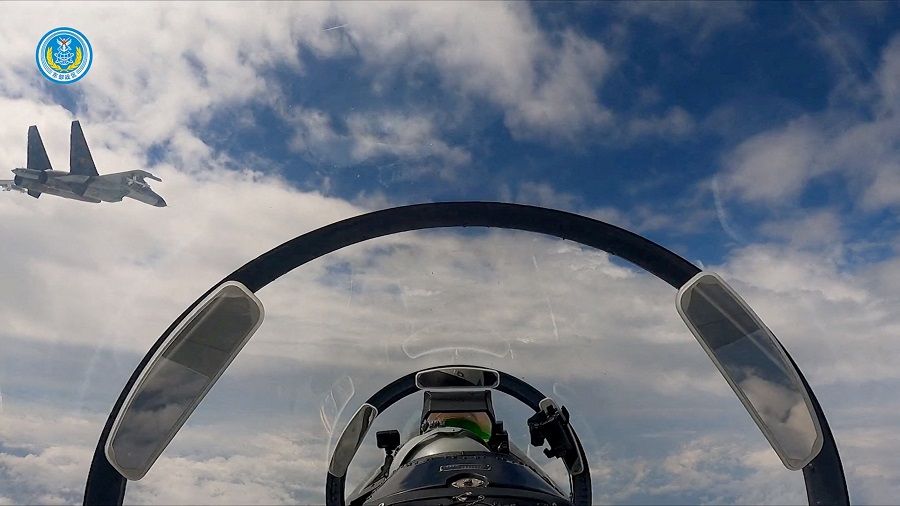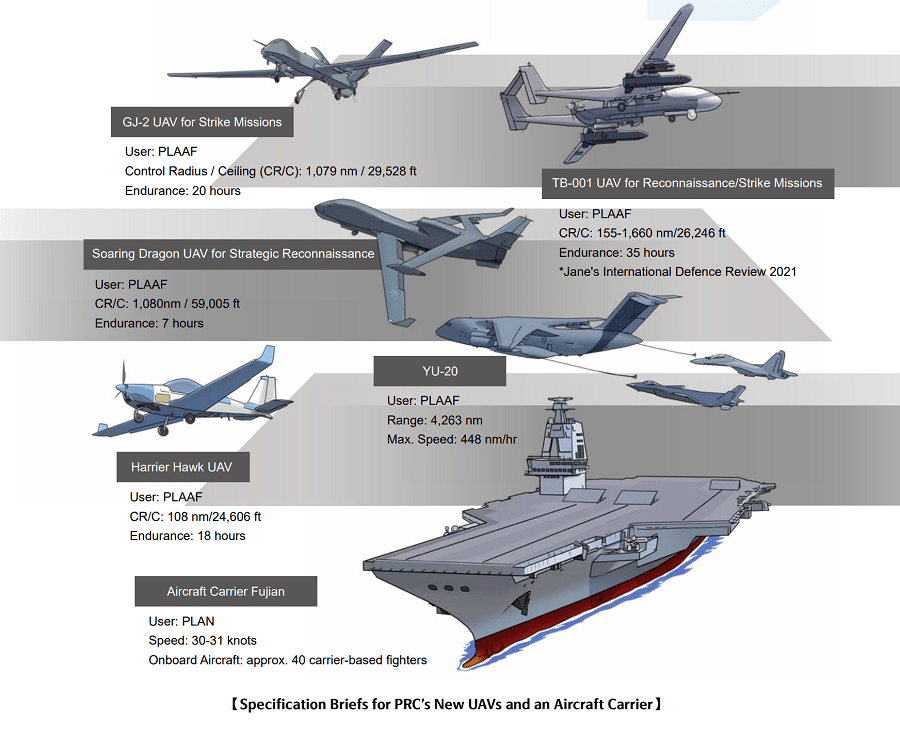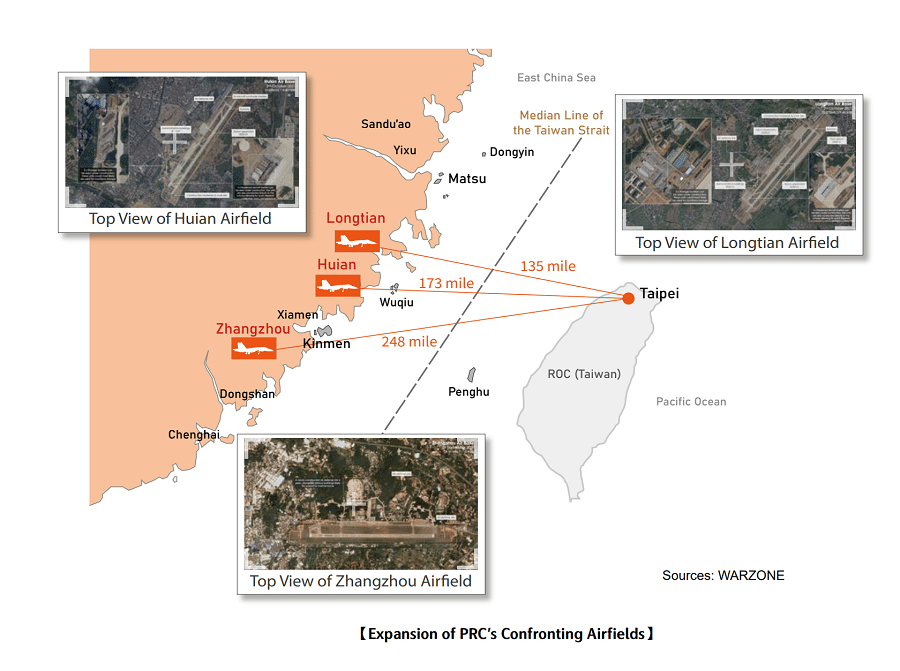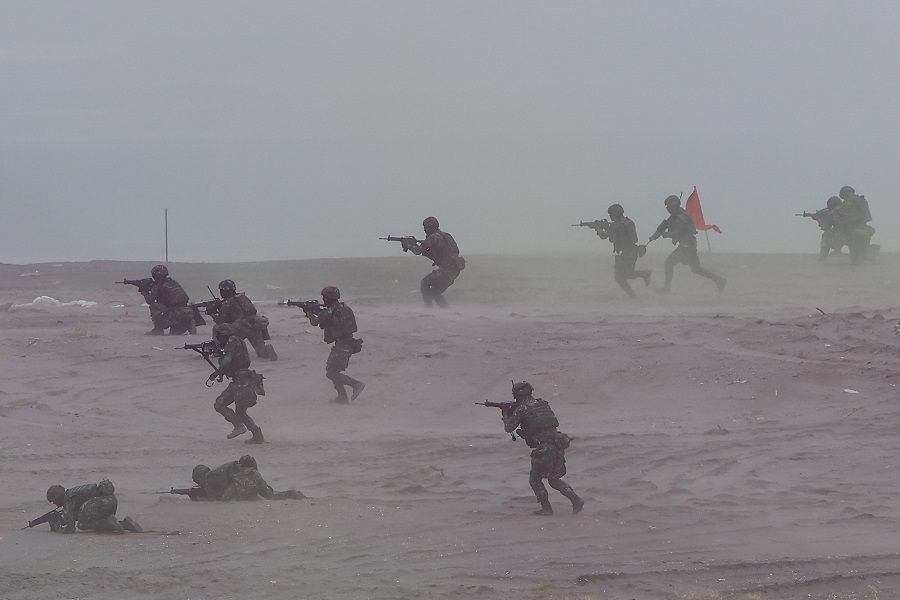Taiwan military prepares for urban warfare and asymmetric fight as PLA prepares for war with Taiwan

In September, mainland China's military conducted drills to practice breaking through the "imaginary enemy" siege as part of a significant step-up in preparations for conflict with Taiwan. According to Taiwan's latest defence report, the People's Liberation Army (PLA) is expanding its coastal military airports and deploying carrier battle groups to breach the containment of the US and its allies.
Facing extreme pressure from the mainland, Taiwan's military is preparing for urban warfare, strengthening its asymmetric warfare capabilities with precision-guided munitions (PGMs).
According to Taiwan's Ministry of National Defense, between 6 am on 13 September and 6 am on 14 September, 68 PLA aircraft entered the Taiwan Strait; in the 24 hours from 6 am on 17 September, 103 PLA warplanes were detected entering Taiwan Strait. Each time, 40 planes crossed the median line of the Taiwan Strait.
PLA actions
Taiwan Defence Minister Chiu Kuo-cheng described the "recent enemy situation" as "abnormal". Besides the unusual number of warplanes and warships, there have also been more exercises involving drones, the Rocket Force and the long-range rocket artillery units. The PLA's Eastern and Southern Theater Commands even deployed naval formations for manoeuvres off eastern Taiwan, with the Chinese aircraft carrier Shandong acting as the "enemy" for the Southern Theater Command, and the navy and air force of the Eastern Theater Command acting as the defenders.

Experts and Taiwan authorities assessed that the main purpose of the PLA's low-profile military drills and the lack of publicity was to strengthen its preparedness for war with Taiwan and the containment of foreign military aid during the traditional September training period. Addressing queries, mainland China's Taiwan Affairs Office said on 27 September that the purpose of the PLA's drills near Taiwan was to "resolutely combat the arrogance of Taiwan independence separatist forces and their actions to seek independence".
Taiwan's military assessed that the PLA's combat objective against Taiwan is to keep Taiwan's warplanes from flying and its warships from leaving the base.
Taiwan's national defence report released on 12 September also emphasised the general trend of the PLA's combat readiness and drills near Taiwan. This biennial report, the latest since the Russian invasion of Ukraine and the Taiwan Strait crisis last August, is a detailed 188-page account of military threats, regional situations and response strategies. Analysts even described it as an "honest yet brutal" description of possible war scenarios in the Taiwan Strait.

Taiwan's military assessed that the PLA's combat objective against Taiwan is to keep Taiwan's warplanes from flying and its warships from leaving the base. The report asserted that the PLA is able to blockade Taiwan's ports, airports, military facilities, and air and sea lines of communication to achieve its operational goal of "grounding all aircraft and anchoring all vessels", while cutting off Taiwan's inbound and outbound air and maritime routes.
Taiwan's preparations
Amid extreme pressure from mainland China, the report said Taiwan will pragmatically prepare for urban warfare and enhance its asymmetric warfare capabilities, including acquiring "mobile, small, portable, and AI-enabled" weapons, unmanned aerial vehicles (UAV), and counter-UAV systems. It will also use geography, terrain, features, urban environment, buildings and military critical infrastructure protection measures within tactical defence areas to build layered in-depth counter-offensive capabilities and increase defence lines to thwart enemy invasion attempts.
The report also mentioned that the PLA is using targeted strategic arrangements and planned realistic combat training and exercises to strengthen its preparedness against Taiwan, and highlighted two major threats facing Taiwan as a result of the development of mainland China's military power:
First, the PLA is expanding the three coastal military airfields closest to Taipei and normalising the deployment of UAVs and new fighters there to enhance air power to suppress Taiwan's coast and seize air superiority in the event of war in the Taiwan Strait. The three military airfields are situated in Fujian's Longtian, Huian and Zhangzhou, which are 135 nautical miles (about 250 kilometres), 173 nautical miles and 248 nautical miles from Taipei respectively.

Second, the mainland's third aircraft carrier, Fujian, is expected to be commissioned in 2025, ready to break through the containment of the US and its allies and move out of the western Pacific. At the same time, the mainland's two existing aircraft carriers, Liaoning and Shandong, are enhancing the capabilities of the navy and the air force to conduct cross-island chain blue water voyages.
...Taiwan must strengthen its homeland defence as a deterrent, and must not weaken in its ability to strike at the source as well as its active and reserve combat forces.
The report also revealed that as soon as Fujian completes its sea trials and is commissioned by 2025, the PLA's three aircraft carriers will fulfil the PLA's demand for a full A2/AD (Anti-Access/Area Denial) capability. Academics analysed that once its three aircraft carriers are commissioned, the PLA will not only significantly bolster its combat forces but can also split its forces into three different directions to Taiwan's northern, eastern and southern regions, cutting off ammunition and supplies and blocking the Taiwan military's link to the US, Japan and the Philippines.
Professor Ding Shuh-fan, mainland China military expert and chair of the Chinese Council of Advanced Policy Studies, said in an interview with Lianhe Zaobao that in the face of mounting pressure from the PLA, Taiwan must strengthen its homeland defence as a deterrent, and must not weaken in its ability to strike at the source as well as its active and reserve combat forces. Ding added that coastal airports in mainland China are relatively near Taiwan, and "in theory, Taiwan's missiles should be able to reach them".
Ding added that in order to boost Taiwan's land combat power, the US military is ramping up the deployment of special operations instructors to Taiwan and scheduling training for Taiwanese troops at the naval base in Guam, while both sides are coordinating command, control and communications systems.

The 2023 National Defense Report states explicitly that Taiwan "will improve its operational interoperability and participate in regional joint defense through military exchanges to cooperate with like-minded partners and collectively meet PRC's threats and challenges," referring to the US and its allies.
US's support mechanism
However, when it comes to regional joint defence mechanisms, defence analyst Chieh Chung said in an article that Taiwan must act cautiously. Since diplomatic relations between Taiwan and the US ended in 1979, the two sides no longer have a mutual defence treaty, nor is there a framework, plan or chain of command for joint operations. If Beijing feels Taiwan-US relations have crossed a red line, not only would deterrence not work, it might even hasten plans to attack Taiwan.
On the threat from mainland China's expansion of airports, Ding assessed that the PLA is preparing to deploy a large number of drones on coastal military airports, including the TB-001 armed reconnaissance drone that can fly for up to 35 hours. Once activated, the "swarm" of drones represent a real threat to Taiwan, because "drones are low-cost and hard to defend against, and AI makes them even harder to handle."
...the US conducting naval exercises with its allies in various regions, setting up 18 military bases and simulating several new offensive tactics to deal with China...
As for the role played by the aircraft carrier Fujian, Ding feels that as a new type of flat-top CATOBAR (catapult-assisted take-off barrier-arrested recovery) carrier with the capability to carry more missiles and aircraft, it would improve the Chinese carrier group's break-through combat capabilities. In response to the threat from the Chinese carrier group, the US has deployed medium-range surface-to-surface missiles equipped with nuclear warheads with a range of 3,000 kilometres.
However, he added that with the US conducting naval exercises with its allies in various regions, setting up 18 military bases and simulating several new offensive tactics to deal with China, it remains to be seen if the Fujian can be deployed solo in the deep waters of the western Pacific with sufficient air support.
In an interview with Lianhe Zaobao, Taiwan's former chief of the general staff Admiral Lee Hsi-ming said the Ministry of National Defense's acceptance of asymmetric warfare thinking is in line with the total defence concept that he had been advocating for years.

On the criticism of the section in the report on preparing for the wartime scenario of urban warfare with the general population as soldiers and battlefields everywhere, Lee said boosting Taiwan's defence capabilities is a key factor in effective deterrence. He added that mainland China has much more long-range offensive capabilities than Taiwan, and Taiwan's defence strategy cannot rely solely on long-range attacks or extraterritorial war, so the key is to build units with a high survivability rate that the enemy cannot destroy through long-range aerial assault, and make the enemy suffer if they land.
Alternative scenarios
However, as the 19-month war in Ukraine has shown, being prepared for war does not mean being able to avoid it, and being capable of war does not mean being able to end it. To avoid a face-off between powers sparking a nuclear crisis, it is unlikely that the US would interfere in any fighting on Taiwanese territory.
Hence, Lee stressed that Taiwan must "speak softly and carry a big stick". While developing its asymmetrical warfare capability so as to deter mainland China from invading, Taiwan's overall defence strategy must seek ways to build trust with both mainland China and the US. This means on the one hand, not pushing for reunification which would harm US interests, and on the other hand, not engaging in efforts towards Taiwan independence or separatism so as not to harm mainland China's interests and national sentiment. Only then, can there be the hope of coming up with a comprehensive approach to prevent, avoid and maybe even win a war.
This article was first published in Lianhe Zaobao as "解放军大动作对台备战 台军准备进入城镇战并加强不对称战力".
